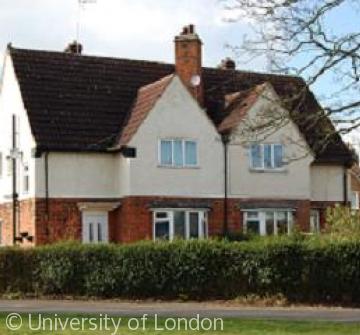Stewarts and Lloyds Housing Estates

Having begun construction of the plant, Stewarts and Lloyds were faced with the problem of housing the new workforce, an expected 1650 people, a figure which would swell to some 4000-5000, many of whom had migrated from Scotland with the company[1]. With no provision in the financial plan produced by the company in 1932 for the construction of workers accommodation, assistance was sought from both the Ministry of Health and Northamptonshire County Council. However by the end of 1932 all of the Government schemes, many curtailed by economic depression, had ceased or were coming to an end. Funded by a 90% loan from the Halifax building society on a figure of £306,405, Stewarts and Lloyds made an arrangement with the Ministry of Health and the Northamptonshire County Council for guarantees over 800 houses to be built by Browning Brothers of Leicester[2]. Bessemer Grove, the first of these houses, completed in the summer of 1934 was located to the south of the old village close to the church, although these would be the last Stewarts and Lloyds houses built in this area. The remainder of the 785 houses were constructed on a large estate either side of the Rockingham road (often seen as the divide between the Scottish and English workers) to the north-west of the plant[3]. This was the most obvious location for the development, as it was the closest level and available land to the plant in which building would not be hampered by existing ironstone quarries, the Midland Railway or areas earmarked for future ironstone extraction. The houses constructed by Stewarts and Lloyds and an additional 314 houses built by the First National Housing Trust, later purchased by Stewarts and Lloyds for a sum of £16, 956 were built to a standard design devised by the company’s architect[4]. The first of these houses were built in a roughly triangular patch of land created by the railway to the east, Rockingham Road to the west and centred on the sweep of the newly laid out Stephenson Way (Plate 1). The estate was completed by a larger development to the west of Rockingham Road built to a standard grid pattern. Situated adjacent to the blast furnaces, the houses were of a semi-detached design, comprising two bedroom one living room and three bedroom one living room layouts in a late arts & crafts design, clearly influenced by the work of the architect Barry Parker and not dissimilar to other contemporary inter-war housing schemes. The construction of a number of detached and three bedroom, one dining room, one lounge layouts suggest that there was a hierarchy of accommodation based on employee status, although the majority of the company executives were offered new homes in the nearby village of East Carlton[5].
By 1939, Stewarts and Lloyds had constructed some 2,149 houses in two large estates either side of the Rockingham Road, bounded by Rowlett Road to the north, Hazelwood Road to the west, Occupation Road to the south and the railway to the east[6]. The majority of these houses were of the two and three bedroom design (2,120) and were described in March 1961 by the Northamptonshire District Valuer as; ‘The better type of pre-war council housing’ and the semi-detached houses made up a far higher proportion of the estate than on the estates later constructed by the Development Corporation. All of brick built construction, with tiled roofs and damp proof courses, these houses were of a good quality, despite the non-cavity walls and metal window frames leading to problems with condensation[7]. The houses built by Stewarts and Lloyds would later form the Penn Green and Studfall Neighbourhoods and were supplemented by a workers club and sports ground built between 1937 and 1938 to the north of Occupation Road, an Odeon cinema, completed in March 1936, shops, schools and churches. Rockingham Road became the main street in Corby with Occupation Road leading westward as the main subsidiary.[8]
[1] W. Holford & H. Myles Wright, Corby New Town: A Report to the Development Corporation on the Master Plan (1952), 5 and Scopes, Corby Works. 114 [2] Scopes, Corby Works. 114 [3] Scopes, Corby Works. 115 [4] Ibid p116 [5] A.R. Maunders, A Process of Struggle: The Campaign for Corby Steel Making in 1979 (1987), 2 [6] The National Archives (TNA): Public Record Office (PRO) HLG 91/763 Ministry of Town and Country Planning and successors: New Towns, Development Corporations, Registered Files, Corby, Acquisition of Houses Owned by Stewarts and Lloyds Ltd [7] TNA: PRO HLG 91/763 [8] Holford & Wright, Corby New Town, 6
Content derived from research undertaken as part of the Victoria County History project








